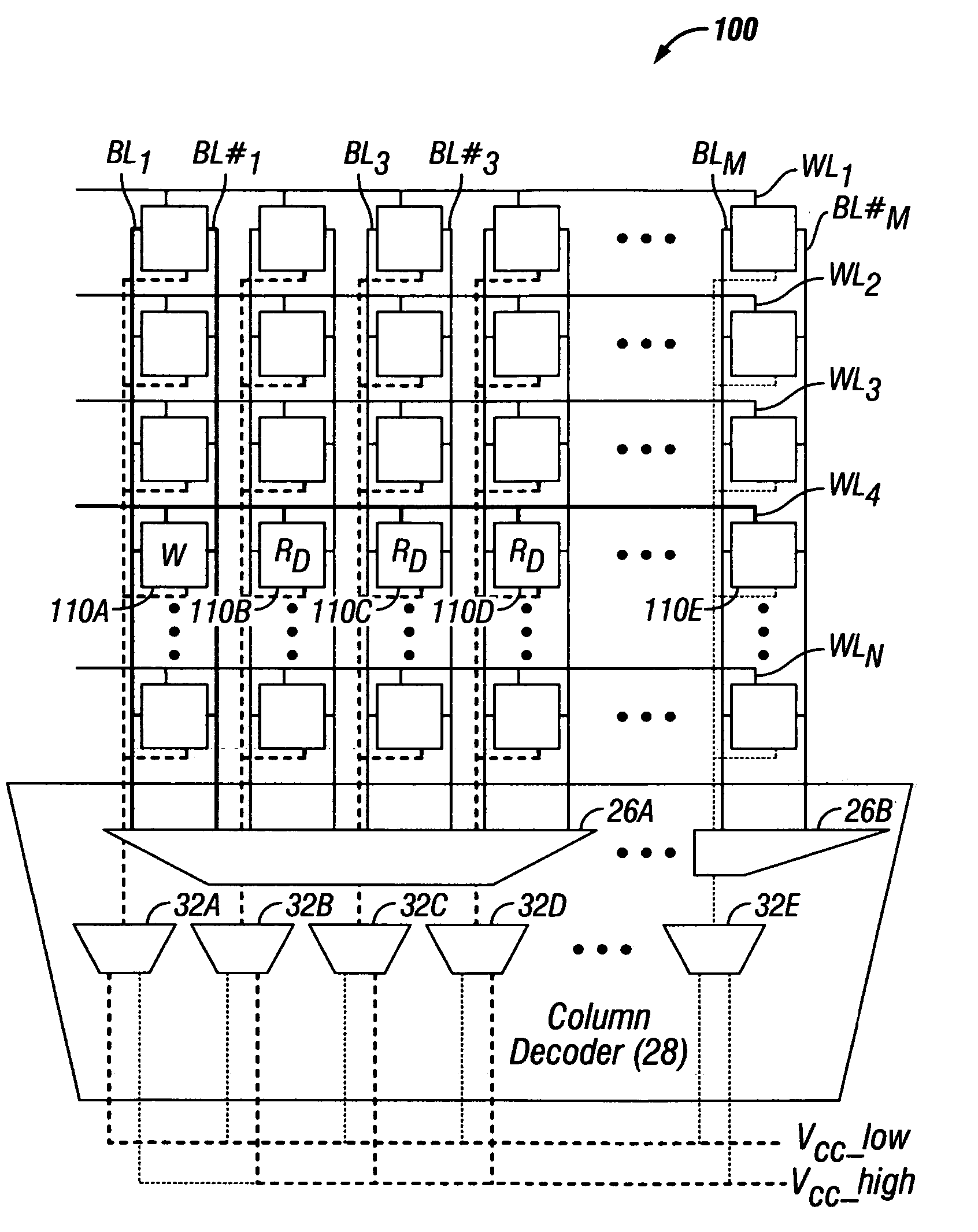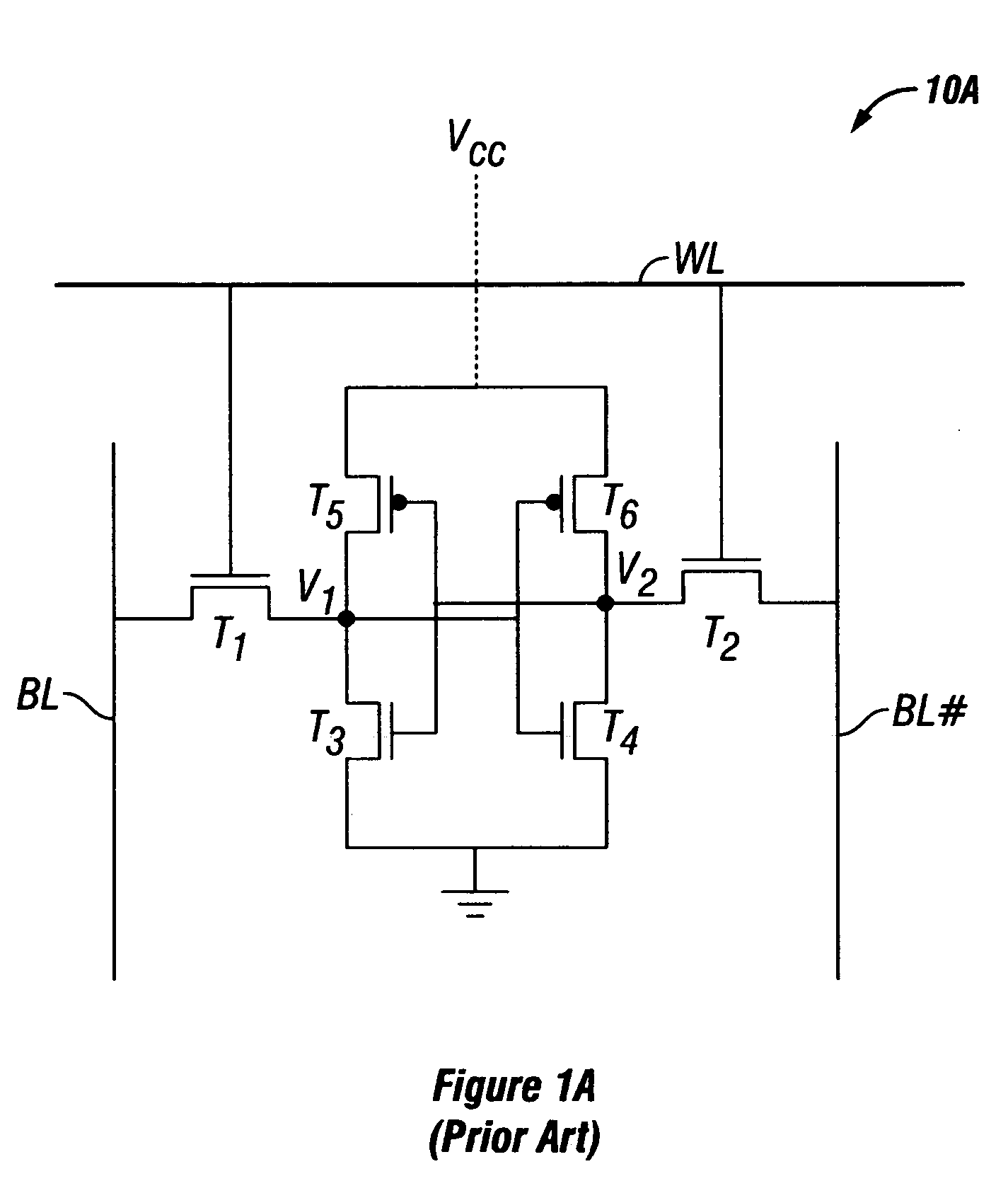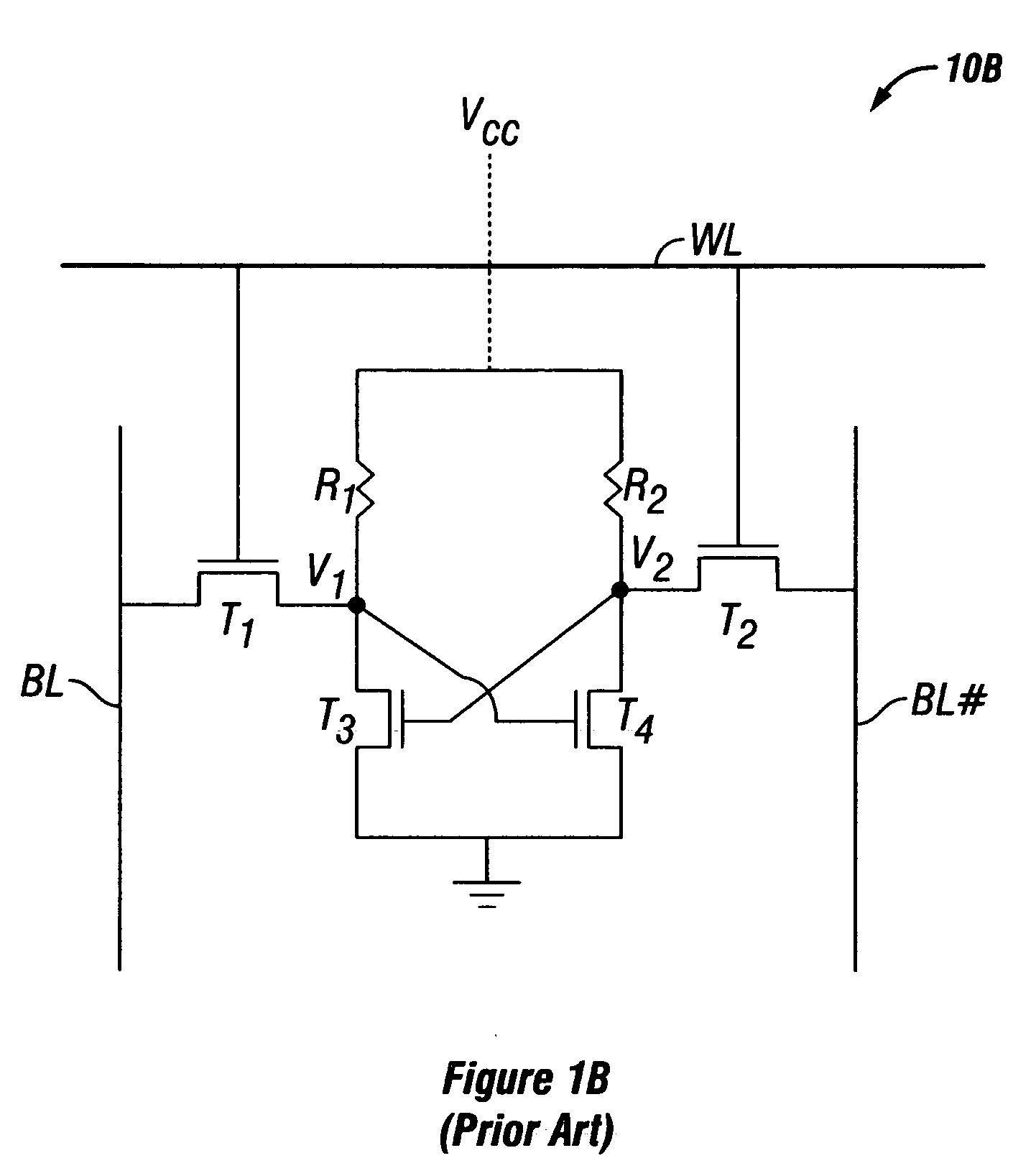Dynamic multi-Vcc scheme for SRAM cell stability control
a sram cell and stability control technology, applied in the field of sram technology, can solve the problems of sram cell scaling extremely difficult, sram cell space occupation, and high cost, and achieve the effects of reducing the cost of sram cell expansion, and improving the stability of sram cells
- Summary
- Abstract
- Description
- Claims
- Application Information
AI Technical Summary
Problems solved by technology
Method used
Image
Examples
Embodiment Construction
[0016] In accordance with the embodiments described herein, a dynamic multi-voltage method and memory array are introduced, in which an SRAM memory cell is put under different biasing conditions, depending on the operating mode of the cell. A first cell in the memory array is supplied with a first voltage (for a read operation) while a second sell is simultaneously supplied with a second voltage (for a write operation). By biasing the cell differently for the two distinct operations, a total decoupling of the read and write operations is achieved. The disclosed memory array, as well as future SRAM designs incorporating the disclosed multi-voltage capability thus avoid the conflicting performance requirements of read and write operations. In some embodiments, systems using the dynamic multi-voltage memory array experience a reduction in random single-bit failures due to the improvement in read stability and write margin.
[0017] In the following detailed description, reference is made...
PUM
 Login to View More
Login to View More Abstract
Description
Claims
Application Information
 Login to View More
Login to View More - R&D
- Intellectual Property
- Life Sciences
- Materials
- Tech Scout
- Unparalleled Data Quality
- Higher Quality Content
- 60% Fewer Hallucinations
Browse by: Latest US Patents, China's latest patents, Technical Efficacy Thesaurus, Application Domain, Technology Topic, Popular Technical Reports.
© 2025 PatSnap. All rights reserved.Legal|Privacy policy|Modern Slavery Act Transparency Statement|Sitemap|About US| Contact US: help@patsnap.com



